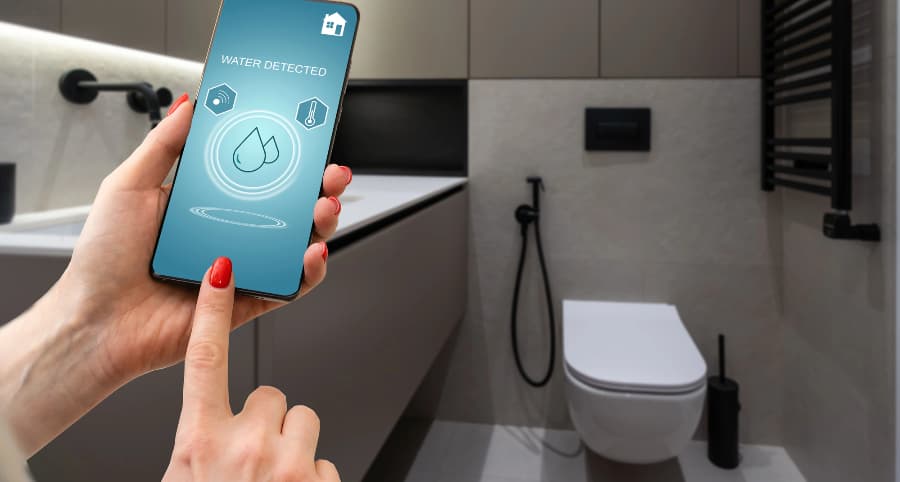How does a water sensor work and why use one with your Long Beach smart home?

One minor leak at your house can cause big issues and thousands of dollars worth of damage. You have to protect against this danger; fortunately, there’s an easy way to achieve this. A water sensor is an economical, simple, and effective solution. Explore how they work and why you might integrate water sensors into your Long Beach smart home.
How water sensors shield Long Beach your home
Water enters homes in numerous ways, whether from a plumbing failure, weather-related incident, appliance malfunction, or just human error. However it occurs, you have to know right away, and this is how water sensors help. But how exactly do they work?
Many water sensors are conductive and work with two electrodes. When water infiltrates the area between the electrodes, an electrical circuit is created, activating your alarm. You’ll also come across capacitive sensors that emit an electrical field. Your alarm sounds when water contacts the conductive parts of these components and interrupts the field. Optical sensors employing infrared LED light are an additional choice.
Some water sensors give you more
Certain advanced water sensors give you even more defense as they feature incorporated temperature sensors. This is a helpful way to prevent frozen pipes. If there’s a severe reduction in temperature, you’ll find out immediately. Taking action before pipes break will protect you from water infiltration and expensive repairs.
Why connect water sensors to your Long Beach smart home?
When water issues happen, you need to be notified immediately. You can reach this aim by incorporating water sensors into your smart home. Whether you’re home to hear the alarm or not, you’ll receive an immediate notification on your cell phone. As an additional backup, your 24-hour monitoring specialists will be alerted. Each moment is critical in a water emergency to control the destruction and disturbance to your life.
Where should you install water sensors?
Any area prone to an influx of water is an ideal place for water sensors. Think about installing in these locations:
- Bathrooms: Attach at the back of toilets or next to tubs.
- Basements: Water frequently seeps into basements through cracked walls or as a result of excess rain or faulty sump pumps.
- Near water heaters or appliances: Any water-using appliance could ultimately leak.
- Underneath sinks: Water sensors are ideal for detecting plumbing leaks in areas you can’t see.
- Attics: Detect roof leaks promptly and avoid costly repairs.
Install water sensors with your Vivint smart home
Give your residence the robust protection it deserves with Vivint’s advanced tools. Our water sensors in Long Beach integrate with your Vivint smartphone app to deliver automatic alerts whenever your alarm goes off. You also enjoy integrated temperature sensors to prevent frozen pipes. Explore the smart home tools available in Long Beach by calling (562) 376-5457 today.
